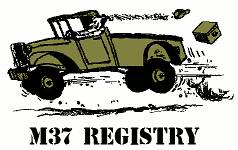There are two basic groups of 230 rods: the forging no. 954408, which were used from 1942 through 1954, and are made in odd cylinder and even cylinder versions (the difference being on which side of the big end web the cylinder wall oiling squirt hole is drilled), and the later forging no. 1554530, which were used from 1955 through the end of production and which are drilled with squirt holes on both sides, and can therefore be used in either odd or even cylinders. The two designs can be mixed in the same engine, provided the squirt holes are in the correct locations.
However, in sorting through the rods that I've been collecting, I've discovered that there's a fair amount of weight variance within any group of the same forging number (and there's enough differences in the markings to suggest that Chrysler sourced the rods from more than one supplier or forging dies). There's also a difference in average weights between the two forging number groups, but more than could be attributed to the extra squirt hole in the later style.
Here's a typical 954408 rod:
And here's a typical 1554530 rod:
And from this angle, you can see the extra oil squirt hole in the later style 1554530 rod on the left:
After looking closer at the rods, I discovered what is likely the cause for at least some of the weight difference: the early rods have a cut in the small end to allow oil into the piston pin bushing, while the later rods do not have the cut:
After tearing down a couple of T245 engines, I've found a mix of the old and new rods, so it wasn't uncommon for them to be substituted during a rebuild.
I'm surprised that Chrysler engineering decided to eliminate the oil feed hole for the piston pin bushing. The only way to get oil into that bushing on the 1554530 rods is from the side, which doesn't seem very effective. Even new, high performance, H-beam rods for high horsepower V8 engines with floating pin bushings still have the oil hole on top of the small end.
If I end up using the 1554530 rods, I'm going to drill and chamfer an oil hole in the top of the small end. The replacement piston pin bushings that I have on hand have the hole, and it will remove a little bit of weight as well as increase the lubrication and durability of the bushing. Combined with a good polishing job on the sides of the beams, maybe I can add some strength and remove some weight to even them up. These rods are heavy enough as is.






